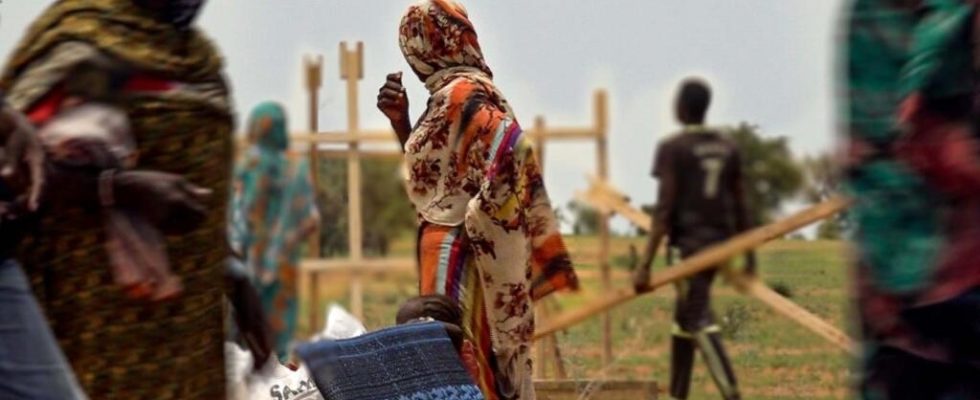More than 240,000 people from Sudan have crossed the border since the outbreak of hostilities in Khartoum three months ago. The authorities, UN agencies and their partners are stepping up their efforts to avoid a humanitarian catastrophe in the east of the country. The government has allocated land for the construction of three new refugee camps, while UNHCR has expanded seven existing sites, which host more than 400,000 Sudanese who have come over the past 20 years.
2 mins
With our special correspondent back from Ourang camp, Carol Valade
The last pillars are planted, the last tarpaulins are stretched: the new Orang camp, which emerged from the ground in barely a week, is ready to receive 5,000 people. A real logistical challenge at the start of the rainy season in Chad. Amine Haroun Agar, from the NGO ADES, is very proud of his teams:
” In one week, we built around 1,000 shelters. Can you imagine this mobilization capacity in terms of logistics? The country faces a shortage of means of construction, but still: the forces, the energies are mobilized so that the city of Adré is decongested. »
Read alsoChad: the city of Adré swallowed up by the flow of Sudanese refugees
The aim is to welcome 35,000 refugees by the end of the month. Sany Aakilou from UNHCR explains: “ Currently, we are at about 40 latrines already completed in four days. And we will continue because we have a target of 1,500 latrines in Ourang camp. »
The work is completed just in time to receive the very first convoy of Sudanese from the border. This is only 25 kilometers away; but with the rainy season, some trucks can take up to two days to cover them.
Brice Deglas emergency coordinator at UNHCR: “ When you see the flow we have now, the transit centers are getting more and more congested. We must therefore quickly change our strategy to continue to identify other additional sites in order to be able to increase the capacity to receive refugees. »
Two more camps are springing up as UNHCR and the authorities seek to identify a fourth site. Because the forecasts on the evolution of the crisis remain very pessimistic.
Read alsoOn the Chadian border, the chilling testimonies of Sudanese survivors of the massacres in Darfur
